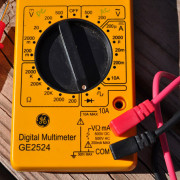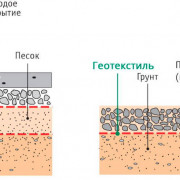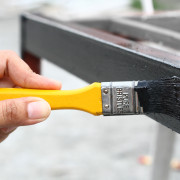Convert 1 inch to cm — conversion of measurement units
Содержание:
- Centimeters to feet and inches chart
- ›› Definition: Centimeter
- Feet and inches to centimeters chart
- ›› Definition: Inch
- ›› Definition: Inch
- ›› Want other units?
- ›› Common length conversions
- ›› Definition: Inch
- ›› Definition: Centimeter
- ›› Metric conversions and more
- How to Convert Inches to Centimeters
- Inches
- Centimeters
- ›› Definition: Centimeter
- ›› Want other units?
- ›› Common length conversions
- ›› Definition: Inch
- ›› Definition: Centimeter
- ›› Metric conversions and more
- ›› Definition: Centimeter
- ›› Definition: Centimeter
- ›› Want other units?
- ›› Common length conversions
- ›› Definition: Centimeter
- ›› Definition: Inch
- ›› Metric conversions and more
- How to Convert Centimeters to Inches
- Centimeters
- Inches
- ›› Definition: Centimeter
- ›› Definition: Inch
- ›› Definition: Inch
- ›› Want other units?
- ›› Common length conversions
- ›› Definition: Inch
- ›› Definition: Centimeter
- ›› Metric conversions and more
- ›› Definition: Inch
- ›› Definition: Centimeter
- ›› Want other units?
- ›› Common length conversions
- ›› Definition: Centimeter
- ›› Definition: Inch
- ›› Metric conversions and more
Centimeters to feet and inches chart
| Centimeters | Feet | Feet and inches |
|---|---|---|
| 160 cm | 5.25 feet | 5 feet, 3 in |
| 161 cm | 5.28 feet | 5 feet, 3.4 in |
| 162 cm | 5.31 feet | 5 feet, 3.8 in |
| 163 cm | 5.35 feet | 5 feet, 4.2 in |
| 164 cm | 5.38 feet | 5 feet, 4.6 in |
| 165 cm | 5.41 feet | 5 feet, 5 in |
| 166 cm | 5.45 feet | 5 feet, 5.4 in |
| 167 cm | 5.48 feet | 5 feet, 5.7 in |
| 168 cm | 5.51 feet | 5 feet, 6.1 in |
| 169 cm | 5.54 feet | 5 feet, 6.5 in |
| 170 cm | 5.58 feet | 5 feet, 6.9 in |
| 171 cm | 5.61 feet | 5 feet, 7.3 in |
| 172 cm | 5.64 feet | 5 feet, 7.7 in |
| 173 cm | 5.68 feet | 5 feet, 8.1 in |
| 174 cm | 5.71 feet | 5 feet, 8.5 in |
| 175 cm | 5.74 feet | 5 feet, 8.9 in |
| 176 cm | 5.77 feet | 5 feet, 9.3 in |
| 177 cm | 5.81 feet | 5 feet, 9.7 in |
| 178 cm | 5.84 feet | 5 feet, 10.1 in |
| 179 cm | 5.87 feet | 5 feet, 10.5 in |
| 180 cm | 5.91 feet | 5 feet, 10.9 in |
| 181 cm | 5.94 feet | 5 feet, 11.3 in |
| 182 cm | 5.97 feet | 5 feet, 11.7 in |
| 183 cm | 6 feet | 6 feet, 0 in |
| 184 cm | 6.04 feet | 6 feet, 0.4 in |
| 185 cm | 6.07 feet | 6 feet, 0.8 in |
| 186 cm | 6.1 feet | 6 feet, 1.2 in |
| 187 cm | 6.14 feet | 6 feet, 1.6 in |
| 188 cm | 6.17 feet | 6 feet, 2 in |
| 189 cm | 6.2 feet | 6 feet, 2.4 in |
| 190 cm | 6.23 feet | 6 feet, 2.8 in |
| 191 cm | 6.27 feet | 6 feet, 3.2 in |
| 192 cm | 6.3 feet | 6 feet, 3.6 in |
| 193 cm | 6.33 feet | 6 feet, 4 in |
| 194 cm | 6.36 feet | 6 feet, 4.4 in |
| 195 cm | 6.4 feet | 6 feet, 4.8 in |
| 196 cm | 6.43 feet | 6 feet, 5.2 in |
| 197 cm | 6.46 feet | 6 feet, 5.6 in |
| 198 cm | 6.5 feet | 6 feet, 6 in |
| 199 cm | 6.53 feet | 6 feet, 6.3 in |
| 200 cm | 6.56 feet | 6 feet, 6.7 in |
| Note: conversions are rounded to max 1 decimal place. |
›› Definition: Centimeter
A centimetre (American spelling centimeter, symbol cm) is a unit of length that is equal to one hundreth of a metre, the current SI base unit of length. A centimetre is part of a metric system. It is the base unit in the centimetre-gram-second system of units. A corresponding unit of area is the square centimetre. A corresponding unit of volume is the cubic centimetre.
The centimetre is a now a non-standard factor, in that factors of 103 are often preferred. However, it is practical unit of length for many everyday measurements. A centimetre is approximately the width of the fingernail of an adult person.
Feet and inches to centimeters chart
| Feet and inches | Centimeters |
|---|---|
| 5 feet 0 inches | 152.4 cm |
| 5 feet 1 inches | 154.94 cm |
| 5 feet 2 inches | 157.48 cm |
| 5 feet 3 inches | 160.02 cm |
| 5 feet 4 inches | 162.56 cm |
| 5 feet 5 inches | 165.1 cm |
| 5 feet 6 inches | 167.64 cm |
| 5 feet 7 inches | 170.18 cm |
| 5 feet 8 inches | 172.72 cm |
| 5 feet 9 inches | 175.26 cm |
| 5 feet 10 inches | 177.8 cm |
| 5 feet 11 inches | 180.34 cm |
| 6 feet 0 inches | 182.88 cm |
| 6 feet 1 inches | 185.42 cm |
| 6 feet 2 inches | 187.96 cm |
| 6 feet 3 inches | 190.5 cm |
| 6 feet 4 inches | 193.04 cm |
| 6 feet 5 inches | 195.58 cm |
| 6 feet 6 inches | 198.12 cm |
| 6 feet 7 inches | 200.66 cm |
| 6 feet 8 inches | 203.2 cm |
| 6 feet 9 inches | 205.74 cm |
| 6 feet 10 inches | 208.28 cm |
| 6 feet 11 inches | 210.82 cm |
| Note: conversions are rounded to 2 decimal places. |
What is 6 feet in cm?
6 feet is equal to 182.88 cm. There are 30.48 cm in a foot, so we can multiply 6 by 30.48 to get our answer of 182.88.
Advertisement
How to convert centimeters and inches
1 inch is equal to 2.54cm. To convert centimeters to inches you need to divide your figure by 2.54. If you wish to convert inches to cm, multiply your figure by 2.54.
You can also use our inches to cm or cm to inches converters for these calculations.
Note that we also have other popular length and height converters available that sit alongside our cm to feet tool, helping you to calculate different measurements of height and length. You can convert from
meters to feet and inches here and
feet to inches here.
›› Definition: Inch
An inch is the name of a unit of length in a number of different systems, including Imperial units, and United States customary units. There are 36 inches in a yard and 12 inches in a foot. The inch is usually the universal unit of measurement in the United States, and is widely used in the United Kingdom, and Canada, despite the introduction of metric to the latter two in the 1960s and 1970s, respectively. The inch is still commonly used informally, although somewhat less, in other Commonwealth nations such as Australia; an example being the long standing tradition of measuring the height of newborn children in inches rather than centimetres. The international inch is defined to be equal to 25.4 millimeters.
›› Definition: Inch
An inch is the name of a unit of length in a number of different systems, including Imperial units, and United States customary units. There are 36 inches in a yard and 12 inches in a foot. The inch is usually the universal unit of measurement in the United States, and is widely used in the United Kingdom, and Canada, despite the introduction of metric to the latter two in the 1960s and 1970s, respectively. The inch is still commonly used informally, although somewhat less, in other Commonwealth nations such as Australia; an example being the long standing tradition of measuring the height of newborn children in inches rather than centimetres. The international inch is defined to be equal to 25.4 millimeters.
›› Want other units?
You can do the reverse unit conversion from
CM to INCHES, or enter any two units below:
››
Common length conversions
INCHES to fodINCHES to micromicronINCHES to polegadaINCHES to townshipINCHES to millimeterINCHES to gryINCHES to fadenINCHES to milleINCHES to leagueINCHES to miglio
››
Definition: Inch
An inch is the name of a unit of length in a number of different systems, including Imperial units, and United States customary units. There are 36 inches in a yard and 12 inches in a foot. The inch is usually the universal unit of measurement in the United States, and is widely used in the United Kingdom, and Canada, despite the introduction of metric to the latter two in the 1960s and 1970s, respectively. The inch is still commonly used informally, although somewhat less, in other Commonwealth nations such as Australia; an example being the long standing tradition of measuring the height of newborn children in inches rather than centimetres. The international inch is defined to be equal to 25.4 millimeters.
››
Definition: Centimeter
A centimetre (American spelling centimeter, symbol cm) is a unit of length that is equal to one hundreth of a metre, the current SI base unit of length. A centimetre is part of a metric system. It is the base unit in the centimetre-gram-second system of units. A corresponding unit of area is the square centimetre. A corresponding unit of volume is the cubic centimetre.
The centimetre is a now a non-standard factor, in that factors of 103 are often preferred. However, it is practical unit of length for many everyday measurements. A centimetre is approximately the width of the fingernail of an adult person.
››
Metric conversions and more
ConvertUnits.com provides an online
conversion calculator for all types of measurement units.
You can find metric conversion tables for SI units, as well
as English units, currency, and other data. Type in unit
symbols, abbreviations, or full names for units of length,
area, mass, pressure, and other types. Examples include mm,
inch, 100 kg, US fluid ounce, 6’3″, 10 stone 4, cubic cm,
metres squared, grams, moles, feet per second, and many more!
How to Convert Inches to Centimeters
To convert an inch measurement to a centimeter measurement, multiply the length by the conversion ratio.
Since one inch is equal to 2.54 centimeters, you can use this simple formula to convert:
The length in centimeters is equal to the inches multiplied by 2.54.
For example, here’s how to convert 5 inches to centimeters using the formula above.
How Many Centimeters are in an Inch?
There are 2.54 centimeters in an inch, which is why we use this value in the formula above.
Our inch fraction calculator can add inches and centimeters
together, and it also automatically converts the results to US customary, imperial, and SI metric values.
Inches and centimeters are both units used to measure length. Keep reading to learn more about each unit of measure.
Inches
An inch is a unit of linear length measure equal to 1/12 of a foot or 1/36 of a yard.
Because the international yard is legally defined to be equal to exactly 0.9144 meters, one inch is equal to 2.54 centimeters.
The inch is a US customary and imperial unit of length. Inches can be abbreviated as in; for example, 1 inch can be written as 1 in.
Inches can also be denoted using the ″ symbol, otherwise known as a double-prime.
Often a double-quote («) is used instead of a double-prime for convenience.
A double-prime is commonly used to express 1 in as 1″.
The standard ruler has 12″, and is a common measuring tool for measuring inches.
They are also often measured using tape measures, which commonly come in lengths from 6′ — 35′.
Other types of measuring devices include scales, calipers, measuring wheels, micrometers, yardsticks, and even lasers.
Centimeters
One centimeter is equal to one-hundredth (1/100) of a meter, which is defined as the distance light travels in a vacuum in a 1/299,792,458second time interval.
The centimeter, or centimetre, is a multiple of the meter, which is the SI base unit for length. In the metric system, «centi» is the prefix for 10-2. Centimeters can be abbreviated as cm; for example, 1 centimeter can be written as 1 cm.
typically have 30 cm, which are represented by 30 large tick marks.
To get a rough idea of the actual length of a centimeter, a standard pencil is just about 1 cm thick.
We recommend using a ruler or tape measure for measuring length, which can be found at a local retailer or home center.
Rulers are available in imperial, metric, or combination with both values, so make sure you get the correct type for your needs.
›› Definition: Centimeter
A centimetre (American spelling centimeter, symbol cm) is a unit of length that is equal to one hundreth of a metre, the current SI base unit of length. A centimetre is part of a metric system. It is the base unit in the centimetre-gram-second system of units. A corresponding unit of area is the square centimetre. A corresponding unit of volume is the cubic centimetre.
The centimetre is a now a non-standard factor, in that factors of 103 are often preferred. However, it is practical unit of length for many everyday measurements. A centimetre is approximately the width of the fingernail of an adult person.
›› Want other units?
You can do the reverse unit conversion from
cm to inch, or enter any two units below:
››
Common length conversions
inch to pointinch to palminch to microninch to milhainch to kiloparsecinch to thouinch to kyuinch to rangeinch to milinch to siriometer
››
Definition: Inch
An inch is the name of a unit of length in a number of different systems, including Imperial units, and United States customary units. There are 36 inches in a yard and 12 inches in a foot. The inch is usually the universal unit of measurement in the United States, and is widely used in the United Kingdom, and Canada, despite the introduction of metric to the latter two in the 1960s and 1970s, respectively. The inch is still commonly used informally, although somewhat less, in other Commonwealth nations such as Australia; an example being the long standing tradition of measuring the height of newborn children in inches rather than centimetres. The international inch is defined to be equal to 25.4 millimeters.
››
Definition: Centimeter
A centimetre (American spelling centimeter, symbol cm) is a unit of length that is equal to one hundreth of a metre, the current SI base unit of length. A centimetre is part of a metric system. It is the base unit in the centimetre-gram-second system of units. A corresponding unit of area is the square centimetre. A corresponding unit of volume is the cubic centimetre.
The centimetre is a now a non-standard factor, in that factors of 103 are often preferred. However, it is practical unit of length for many everyday measurements. A centimetre is approximately the width of the fingernail of an adult person.
››
Metric conversions and more
ConvertUnits.com provides an online
conversion calculator for all types of measurement units.
You can find metric conversion tables for SI units, as well
as English units, currency, and other data. Type in unit
symbols, abbreviations, or full names for units of length,
area, mass, pressure, and other types. Examples include mm,
inch, 100 kg, US fluid ounce, 6’3″, 10 stone 4, cubic cm,
metres squared, grams, moles, feet per second, and many more!
›› Definition: Centimeter
A centimetre (American spelling centimeter, symbol cm) is a unit of length that is equal to one hundreth of a metre, the current SI base unit of length. A centimetre is part of a metric system. It is the base unit in the centimetre-gram-second system of units. A corresponding unit of area is the square centimetre. A corresponding unit of volume is the cubic centimetre.
The centimetre is a now a non-standard factor, in that factors of 103 are often preferred. However, it is practical unit of length for many everyday measurements. A centimetre is approximately the width of the fingernail of an adult person.
›› Definition: Centimeter
A centimetre (American spelling centimeter, symbol cm) is a unit of length that is equal to one hundreth of a metre, the current SI base unit of length. A centimetre is part of a metric system. It is the base unit in the centimetre-gram-second system of units. A corresponding unit of area is the square centimetre. A corresponding unit of volume is the cubic centimetre.
The centimetre is a now a non-standard factor, in that factors of 103 are often preferred. However, it is practical unit of length for many everyday measurements. A centimetre is approximately the width of the fingernail of an adult person.
›› Want other units?
You can do the reverse unit conversion from
inches to cm, or enter any two units below:
››
Common length conversions
cm to kindcm to twipcm to gnat’s eyecm to sadzhencm to faustcm to hair’s breadthcm to centimetrocm to light-weekcm to pearlcm to cape foot
››
Definition: Centimeter
A centimetre (American spelling centimeter, symbol cm) is a unit of length that is equal to one hundreth of a metre, the current SI base unit of length. A centimetre is part of a metric system. It is the base unit in the centimetre-gram-second system of units. A corresponding unit of area is the square centimetre. A corresponding unit of volume is the cubic centimetre.
The centimetre is a now a non-standard factor, in that factors of 103 are often preferred. However, it is practical unit of length for many everyday measurements. A centimetre is approximately the width of the fingernail of an adult person.
››
Definition: Inch
An inch is the name of a unit of length in a number of different systems, including Imperial units, and United States customary units. There are 36 inches in a yard and 12 inches in a foot. The inch is usually the universal unit of measurement in the United States, and is widely used in the United Kingdom, and Canada, despite the introduction of metric to the latter two in the 1960s and 1970s, respectively. The inch is still commonly used informally, although somewhat less, in other Commonwealth nations such as Australia; an example being the long standing tradition of measuring the height of newborn children in inches rather than centimetres. The international inch is defined to be equal to 25.4 millimeters.
››
Metric conversions and more
ConvertUnits.com provides an online
conversion calculator for all types of measurement units.
You can find metric conversion tables for SI units, as well
as English units, currency, and other data. Type in unit
symbols, abbreviations, or full names for units of length,
area, mass, pressure, and other types. Examples include mm,
inch, 100 kg, US fluid ounce, 6’3″, 10 stone 4, cubic cm,
metres squared, grams, moles, feet per second, and many more!
How to Convert Centimeters to Inches
To convert a centimeter measurement to an inch measurement, use a simple formula.
Since one inch is equal to 2.54 centimeters, this formula can be used to convert:
The length in inches is equal to centimeters divided by 2.54.
For example, here’s how to convert 5 centimeters to inches using the formula above.
Our inch fraction calculator can add centimeters and inches
together and it also automatically converts the results to US customary, imperial and SI metric values.
Centimeters and inches are both units used to measure length. Keep reading to learn more about each unit of measure.
Centimeters
One centimeter is equal to one-hundredth (1/100) of a meter, which is defined as the distance light travels in a vacuum in a 1/299,792,458second time interval.
The centimeter, or centimetre, is a multiple of the meter, which is the SI base unit for length. In the metric system, «centi» is the prefix for 10-2. Centimeters can be abbreviated as cm; for example, 1 centimeter can be written as 1 cm.
typically have 30 cm, which are represented by 30 large tick marks.
To get a rough idea of the actual length of a centimeter, a standard pencil is just about 1 cm thick.
Inches
An inch is a unit of linear length measure equal to 1/12 of a foot or 1/36 of a yard.
Because the international yard is legally defined to be equal to exactly 0.9144 meters, one inch is equal to 2.54 centimeters.
The inch is a US customary and imperial unit of length. Inches can be abbreviated as in; for example, 1 inch can be written as 1 in.
Inches can also be denoted using the ″ symbol, otherwise known as a double-prime.
Often a double-quote («) is used instead of a double-prime for convenience.
A double-prime is commonly used to express 1 in as 1″.
The standard ruler has 12″, and is a common measuring tool for measuring inches.
They are also often measured using tape measures, which commonly come in lengths from 6′ — 35′.
Other types of measuring devices include scales, calipers, measuring wheels, micrometers, yardsticks, and even lasers.
We recommend using a ruler or tape measure for measuring length, which can be found at a local retailer or home center.
Rulers are available in imperial, metric, or combination with both values, so make sure you get the correct type for your needs.
›› Definition: Centimeter
A centimetre (American spelling centimeter, symbol cm) is a unit of length that is equal to one hundreth of a metre, the current SI base unit of length. A centimetre is part of a metric system. It is the base unit in the centimetre-gram-second system of units. A corresponding unit of area is the square centimetre. A corresponding unit of volume is the cubic centimetre.
The centimetre is a now a non-standard factor, in that factors of 103 are often preferred. However, it is practical unit of length for many everyday measurements. A centimetre is approximately the width of the fingernail of an adult person.
›› Definition: Inch
An inch is the name of a unit of length in a number of different systems, including Imperial units, and United States customary units. There are 36 inches in a yard and 12 inches in a foot. The inch is usually the universal unit of measurement in the United States, and is widely used in the United Kingdom, and Canada, despite the introduction of metric to the latter two in the 1960s and 1970s, respectively. The inch is still commonly used informally, although somewhat less, in other Commonwealth nations such as Australia; an example being the long standing tradition of measuring the height of newborn children in inches rather than centimetres. The international inch is defined to be equal to 25.4 millimeters.
›› Definition: Inch
An inch is the name of a unit of length in a number of different systems, including Imperial units, and United States customary units. There are 36 inches in a yard and 12 inches in a foot. The inch is usually the universal unit of measurement in the United States, and is widely used in the United Kingdom, and Canada, despite the introduction of metric to the latter two in the 1960s and 1970s, respectively. The inch is still commonly used informally, although somewhat less, in other Commonwealth nations such as Australia; an example being the long standing tradition of measuring the height of newborn children in inches rather than centimetres. The international inch is defined to be equal to 25.4 millimeters.
›› Want other units?
You can do the reverse unit conversion from
cm to inches, or enter any two units below:
››
Common length conversions
inches to bee spaceinches to meterinches to metroinches to roedeinches to tuinches to miglioinches to chinese yardinches to milliareinches to lineal footinches to cuadra
››
Definition: Inch
An inch is the name of a unit of length in a number of different systems, including Imperial units, and United States customary units. There are 36 inches in a yard and 12 inches in a foot. The inch is usually the universal unit of measurement in the United States, and is widely used in the United Kingdom, and Canada, despite the introduction of metric to the latter two in the 1960s and 1970s, respectively. The inch is still commonly used informally, although somewhat less, in other Commonwealth nations such as Australia; an example being the long standing tradition of measuring the height of newborn children in inches rather than centimetres. The international inch is defined to be equal to 25.4 millimeters.
››
Definition: Centimeter
A centimetre (American spelling centimeter, symbol cm) is a unit of length that is equal to one hundreth of a metre, the current SI base unit of length. A centimetre is part of a metric system. It is the base unit in the centimetre-gram-second system of units. A corresponding unit of area is the square centimetre. A corresponding unit of volume is the cubic centimetre.
The centimetre is a now a non-standard factor, in that factors of 103 are often preferred. However, it is practical unit of length for many everyday measurements. A centimetre is approximately the width of the fingernail of an adult person.
››
Metric conversions and more
ConvertUnits.com provides an online
conversion calculator for all types of measurement units.
You can find metric conversion tables for SI units, as well
as English units, currency, and other data. Type in unit
symbols, abbreviations, or full names for units of length,
area, mass, pressure, and other types. Examples include mm,
inch, 100 kg, US fluid ounce, 6’3″, 10 stone 4, cubic cm,
metres squared, grams, moles, feet per second, and many more!
›› Definition: Inch
An inch is the name of a unit of length in a number of different systems, including Imperial units, and United States customary units. There are 36 inches in a yard and 12 inches in a foot. The inch is usually the universal unit of measurement in the United States, and is widely used in the United Kingdom, and Canada, despite the introduction of metric to the latter two in the 1960s and 1970s, respectively. The inch is still commonly used informally, although somewhat less, in other Commonwealth nations such as Australia; an example being the long standing tradition of measuring the height of newborn children in inches rather than centimetres. The international inch is defined to be equal to 25.4 millimeters.
›› Definition: Centimeter
A centimetre (American spelling centimeter, symbol cm) is a unit of length that is equal to one hundreth of a metre, the current SI base unit of length. A centimetre is part of a metric system. It is the base unit in the centimetre-gram-second system of units. A corresponding unit of area is the square centimetre. A corresponding unit of volume is the cubic centimetre.
The centimetre is a now a non-standard factor, in that factors of 103 are often preferred. However, it is practical unit of length for many everyday measurements. A centimetre is approximately the width of the fingernail of an adult person.
›› Want other units?
You can do the reverse unit conversion from
INCHES to CM, or enter any two units below:
››
Common length conversions
CM to diraaCM to light-yearCM to megalight-yearCM to gnat’s eyeCM to leagueCM to fermiCM to barleycornCM to millaCM to arsheenCM to cuadra
››
Definition: Centimeter
A centimetre (American spelling centimeter, symbol cm) is a unit of length that is equal to one hundreth of a metre, the current SI base unit of length. A centimetre is part of a metric system. It is the base unit in the centimetre-gram-second system of units. A corresponding unit of area is the square centimetre. A corresponding unit of volume is the cubic centimetre.
The centimetre is a now a non-standard factor, in that factors of 103 are often preferred. However, it is practical unit of length for many everyday measurements. A centimetre is approximately the width of the fingernail of an adult person.
››
Definition: Inch
An inch is the name of a unit of length in a number of different systems, including Imperial units, and United States customary units. There are 36 inches in a yard and 12 inches in a foot. The inch is usually the universal unit of measurement in the United States, and is widely used in the United Kingdom, and Canada, despite the introduction of metric to the latter two in the 1960s and 1970s, respectively. The inch is still commonly used informally, although somewhat less, in other Commonwealth nations such as Australia; an example being the long standing tradition of measuring the height of newborn children in inches rather than centimetres. The international inch is defined to be equal to 25.4 millimeters.
››
Metric conversions and more
ConvertUnits.com provides an online
conversion calculator for all types of measurement units.
You can find metric conversion tables for SI units, as well
as English units, currency, and other data. Type in unit
symbols, abbreviations, or full names for units of length,
area, mass, pressure, and other types. Examples include mm,
inch, 100 kg, US fluid ounce, 6’3″, 10 stone 4, cubic cm,
metres squared, grams, moles, feet per second, and many more!








